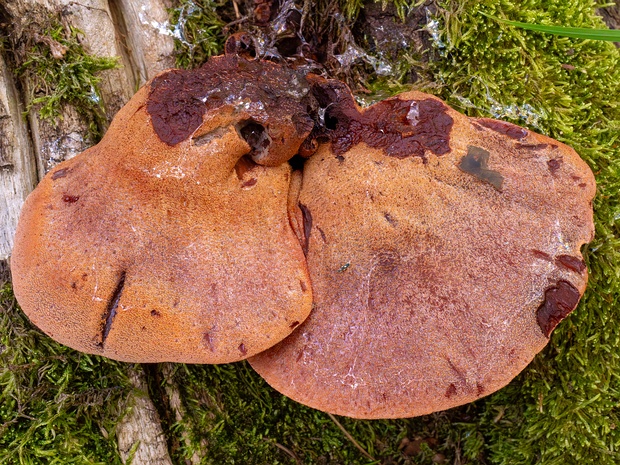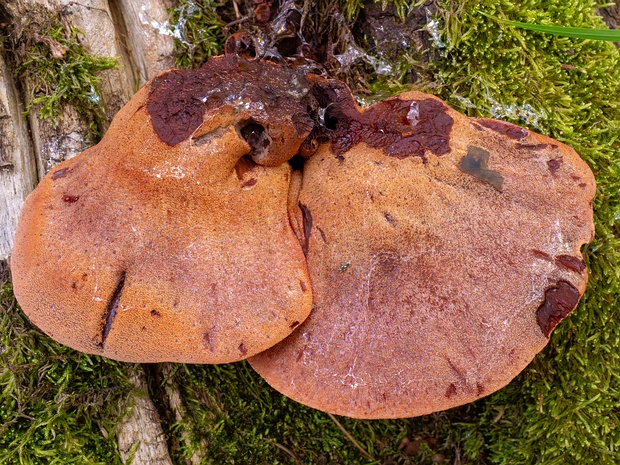Fistulinaceae - Печёночницевые - Beefsteak Fungi Family - Röhrlingsverwandte 9/30/22—8/15/24
The Fistulinaceae, also known as the Beefsteak Fungi Family or Röhrlingsverwandte, is a family of basidiomycete fungi within the order Agaricales. This family is relatively small and contains only a few genera, including Fistulina and Pseudofistulina. Members of this family are characterized by their unique fruiting bodies and flesh-like appearance.
Fistulina hepatica, commonly known as the Beefsteak Fungus, is one of the most well-known species within the Fistulinaceae family. This mushroom resembles a piece of raw meat, with a reddish-brown to dark brown color and a texture that is both firm and fibrous. The cap of this species can reach up to 25 cm in width and 3 cm in thickness.
The spore-bearing surface of the Beefsteak Fungus is composed of numerous small tubes, which can be up to 6 mm long. These tubes release spores that are elliptical in shape, measuring 5 to 7 µm in length and 3 to 4.5 µm in width.
Members of the Fistulinaceae family are primarily found in the Northern Hemisphere, where they grow on various tree species, including oak and chestnut trees. These fungi form a parasitic relationship with their host trees, causing a form of white rot that can lead to the eventual decay of the tree.
The fruiting period for Fistulinaceae species is generally from late summer to autumn. They can be found growing solitary or in small groups, usually on the trunks of trees or fallen logs. Some species, such as Fistulina hepatica, are considered edible and are prized for their unique taste and texture.
The chemical composition of Fistulinaceae species is not well understood. However, some studies have suggested that these fungi may contain compounds with potential medicinal properties, including antioxidant and antimicrobial activities.
Fistulinaceae species play an important ecological role in breaking down wood and recycling nutrients within forest ecosystems. Additionally, their unique fruiting bodies and flesh-like appearance make them an interesting subject for scientific study and observation.


